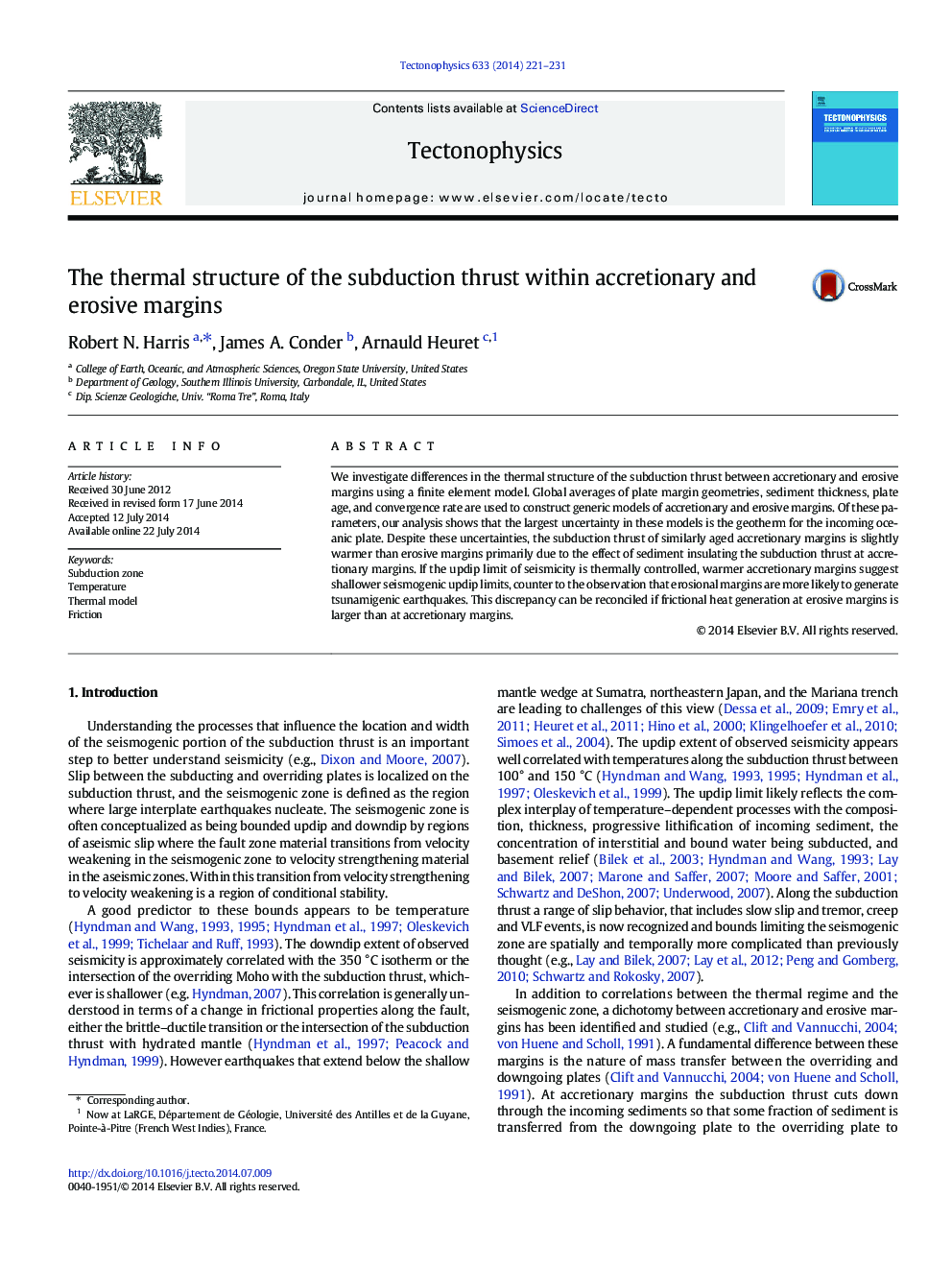| Article ID | Journal | Published Year | Pages | File Type |
|---|---|---|---|---|
| 6433810 | Tectonophysics | 2014 | 11 Pages |
â¢Incoming geotherm contributes significant uncertainty to shallow thermal models of subduction.â¢Updip limit of seismicity is generally shallower at erosive margins than accretionary margins.â¢Frictional heating reconciles thermal structure of margins with updip limit of seismicity.
We investigate differences in the thermal structure of the subduction thrust between accretionary and erosive margins using a finite element model. Global averages of plate margin geometries, sediment thickness, plate age, and convergence rate are used to construct generic models of accretionary and erosive margins. Of these parameters, our analysis shows that the largest uncertainty in these models is the geotherm for the incoming oceanic plate. Despite these uncertainties, the subduction thrust of similarly aged accretionary margins is slightly warmer than erosive margins primarily due to the effect of sediment insulating the subduction thrust at accretionary margins. If the updip limit of seismicity is thermally controlled, warmer accretionary margins suggest shallower seismogenic updip limits, counter to the observation that erosional margins are more likely to generate tsunamigenic earthquakes. This discrepancy can be reconciled if frictional heat generation at erosive margins is larger than at accretionary margins.
